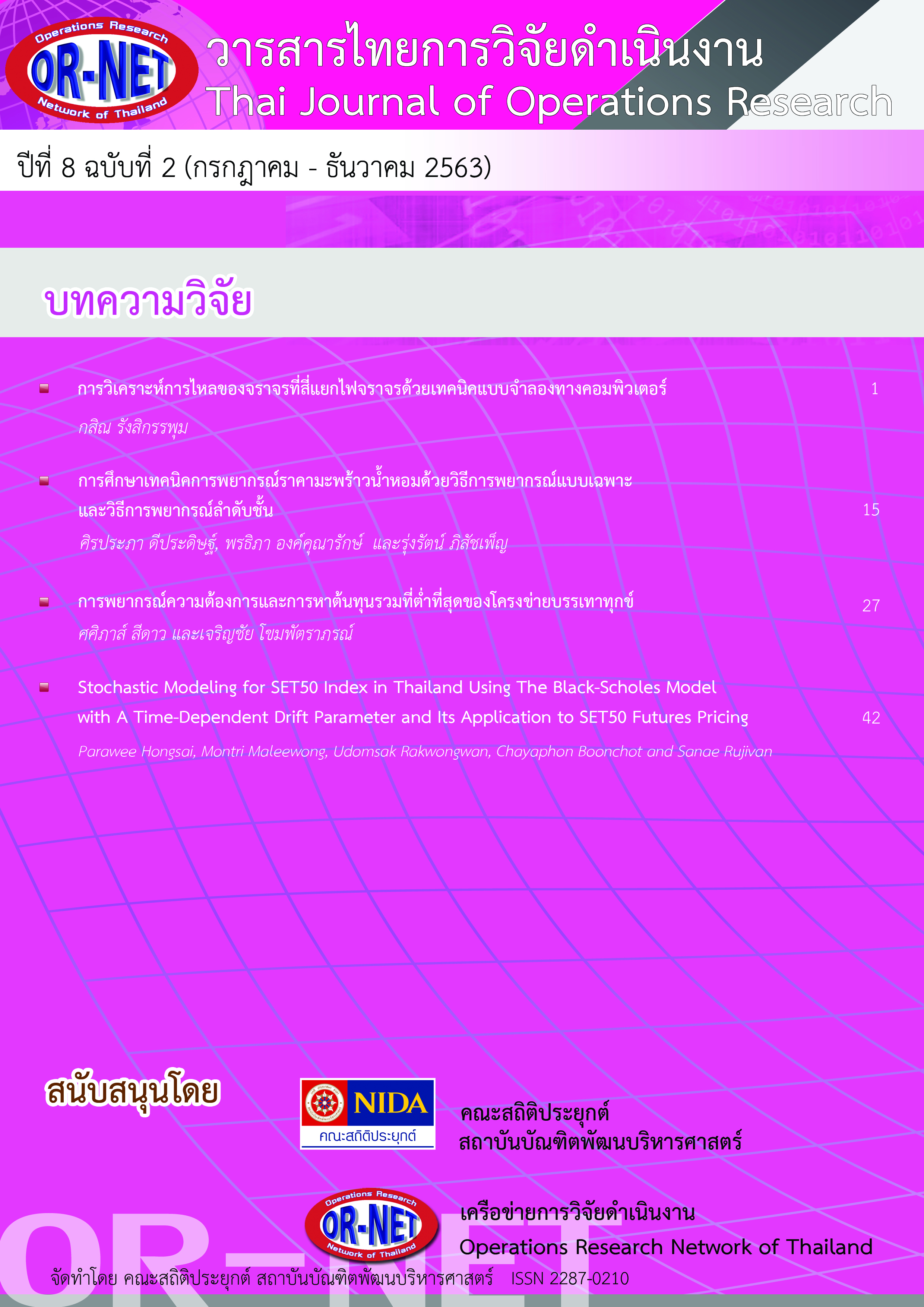Demand Forecasting and Total Cost Minimization of Disaster Relief Network
Keywords:
Demand Forecast, Total Transportation Cost, Disaster, Intermittent and Lumpy Demands, Prepositioning StockAbstract
Rapid degradation of the environment contributes to rising severity of disasters in recent years. Once a disaster hits, a disaster relief aid delivery mechanism is triggered to deliver the relief aids to the needed victims. In many cases, timely deliveries of these aids are vital to the survival of the disaster victims. Therefore, it is important to sufficiently stock these relief aids under uncertainty of disaster. This research assimilates the situation of a humanitarian organization. There are five different relief aids and 10 humanitarian aid centers throughout the country. The majority of the demands of the relief aids exhibit intermittent and lumpy behaviors, so they are forecasted using Croston and Syntetos & Boylan methods together with seasonality index to give more accurate results. Then a mathematical optimization model in which its objective is to minimize the total transportation costs between humanitarian aids centers is formulated. The model also allows transportation of relief aids between neighboring centers. The model is tested and compared with the current practice that only transport the relief aids from the central location. The results show that with the transportation method proposed in this research the cost can be reduced up to 13% for a certain month.
References
[2] van der Laan, E., van Dalen, J., Rohrmoser, M., and Simpson, R., “Demand forecasting and order planning for humanitarian logistics: An empirical assessment”, Journal of Operations Management, Vol. 45, pp. 114–122, 2016.
[3] Hoang, P., Springer Handbook of Engineering Statistic: Statistical Management and Modelling for Demand of Spare Parts, Springer, Germany, pp. 907-911, 2006.
[4] นพพล คณากรยิ่งยง, เจริญชัย โขมพัตราภรณ์, “การพยากรณ์อุปสงค์หลายรูปแบบและการสั่งซื้อแบบตู้คอนเทนเนอร์ที่เหมาะสม กรณีศึกษา อุปกรณ์ออกกำลังกายนำเข้า,” วารสารไทยการวิจัยดำเนินงาน, ปีที่ 5, ฉบับที่ 1, หน้า 1-11, 2560
[5] Bucher, D., Meissner, J. “Configuring single-echelon systems using demand categorization”, In N. Altay and L. A. Litteral (eds). Service Parts Management. London: Springer-Verlag, pp. 203-219, 2011.
[6] ศรีสมรัก อินทุจันทร์, การใช้ระบบสนับสนุนการตัดสินในในการจัดการสินค้าคงคลัง, โครงการตำราเพื่อธุรกิจขนาดย่อม คณะพาณิชยศาสตร์และการบัญชี มหาวิทยาลัยธรรมศาสตร์, กรุงเทพมหานคร, 2532.
[7] พิภพ ลลิตาภรณ์, ระบบการวางแผนและควบคุมการผลิต, พิมพ์ครั้งที่ 8, สมาคมส่งเสริมเทคโนโลยี (ไทย-ญี่ปุ่น), กรุงเทพมหานคร, หน้า 45-49, 2541.
[8] Euud, T. and Babangida, S., “Calculating order-up-to levels for products with intermittent demand”, International Journal of Production Economics, Vol.118, pp. 82-86, 2008.
[9] Syntetos, A. and Boyland, J.E., “The accuracy of intermittent demand estimates”, International Institute of Forecasting, Vol.21, pp.303-314, 2005.
[10] Stevenson, J.W., and Chuong, C.S., 2014. Operations Management, 2 nd ed., McGraw-Hill, pp. 86-88, 2014.
[11] วราพร งามสุข, การพยากรณ์อนุกรมเวลาโดยการเปรียบเทียบวิธีแบบฉบับและวิธีบอกซ์-เจนกินส์ กรณีศึกษาจำนวนการเกิดอุบัติเหตุในประเทศไทย, ปริญญาวิทยาศาสตรบัณฑิต สาขาวิชาสถิติ คณะวิทยาศาสตร์ มหาวิทยาลัยบูรพา, 2555.
[12] ทวัยพร ชาเจียมเจน และ อรรถกร เก่งพล, “การหาปริมาณการผลิตที่เหมาะสมโดยการใช้ตัวแบบทางคณิตศาสตร์ : กรณีศึกษาการวางแผนการผลิตบริษัทในอุตสาหกรรมกระดาษ”, วารสารวิชาการพระจอมเกล้าพระนครเหนือ, ปีที่ 17, ฉบับที่ 3, หน้า 57-65, 2550.
[13] ธนัญชัย ลีภักดิ์ปรีดา, การหาค่าเหมาะสมที่สุดหลักการพื้นฐานและขั้นตอนวิธีการ, สํานักพิมพ์มหาวิทยาลัย ธรรมศาสตร์, กรุงเทพฯ, หน้า 1-9, 2543.




